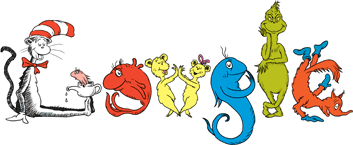Collaborative Learning seems to be one of the biggest task student's have to face today! It seems that when it comes to the Web, user's love to interact for social reasons a.k.a Facebook,
Twitter,
LinkedIn,
Pinterest (*ahem*sound familiar)...but when it comes to interacting with fellow classmates for an assignment...a red flags shoots up!
The
Web 2.0 has made networking and collaborating for group work efficient and timely! It is time to put those red flags down, and swap them out for a mouse...a computer mouse (or track pad if you're into that kinda thing). This week we explored
Wikipedia- the online encyclopedia. Now, with a slogan so catchy, I'm sure most users have heard of it. Wikipedia is an online tool that works as an online collaborative learning tool that allows you to join the conversation and
MODIFY the conversation. It also allows anyone to
create their own Wiki! Now that being said, it acts as a double-edged sword. Seeing as anyone can edit and save the PDF, users must be aware of the
QUALITY of content they are contributing or citing. Usually for school assignments, professors advise students NOT to cite Wikipedia because of the history of false information that has been contributed. BUT that does not mean we have to nix it all together. My advice? Use it for group projects! This is a GREAT way, much like Google Docs, to
contribute and come together as a group without having to physically be in the same location. In fact Wikipedia and Google Docs share multiple
similar features. Such as:
·Editing: It is continuously updated and can be edited and saved by anyone who wishes to contribute.
·Format: Turns itself into a document when you want to edit you simply press "edit" write your contribution then click "save" and it returns to a webpage
·Page History: It allows you to keep track of the original variations where you can revert back to the previous document if you would like to see what has been changed or added.
· Links: Allows you to add links quickly and efficiently to strengthen your information or direct your learners/other users in a helpful direction.
Gather round! Gather round!
I have a tale to tell about a little celebrity who decided it was time to join the conversation, and use
INTERACTIVE ONLINE TOOLS to move forward in the business world (Provided by: a
Feedly reader near you) Even the rich and famous have to collaborate with the public and their business partners in order to move forward in their career. Slowly people are realizing
the power of the Internet and the Web 2.0 Social Networks. Who is this mystery woman? She was known for her fabulous fashion on the screen, and she is carrying the shoe torch off the screen as well. Still not sure? Ladies and gentlemen let me present
Sarah Jessica Parker. She was known as a shoe icon on Sex and the City, and her passion for shoes lives on. She is starting her own shoe collection and as her marketing and promotional approach, she is using all the social networking tools the Web has to offer. The Web 2.0 is a powerful tool that is dominating the structure of society. By students and online users
learning about these tools it will only help prepare and strengthen them for the real world. HOWEVER- every user has a right and a responsibility to create a positive atmosphere with these online tools. A Digital Citizen needs to extend the same freedom to EVERY user. Below is a concept map I created, through Popplet, on rights and responsibilities that should be considered when entering and contributing to the digital realm. ANOTHER tool we used previously. Wow this week just reinforces how useful all these online tools can be!
 |
| Borchuk, L (CC) 2014. |
Just like that we have more information and tools added to our belt.
With this course coming to an end I am still amazed at how many useful tools I have been introduced to and new functions for tools I knew of that I have never considered!
XOXO






